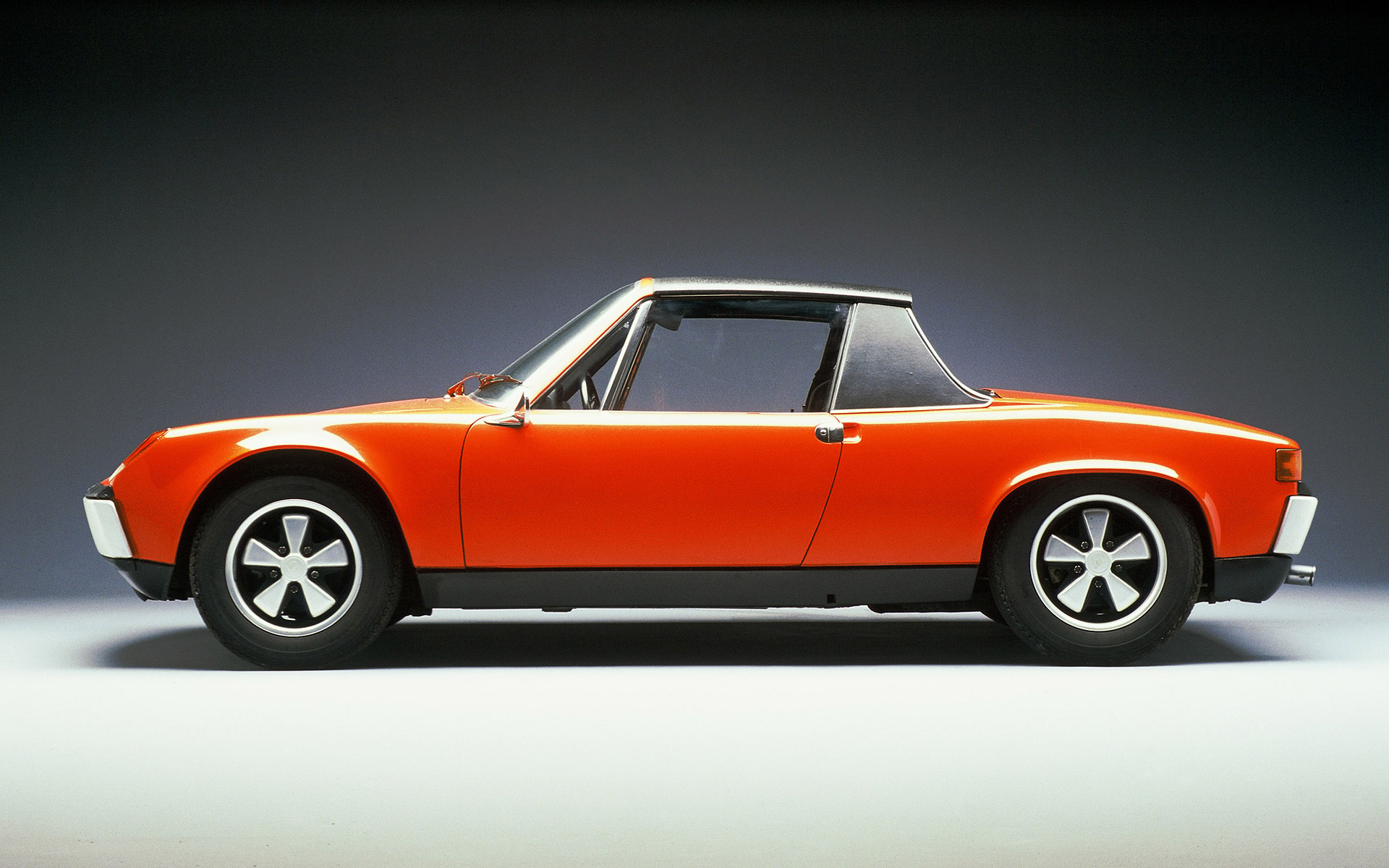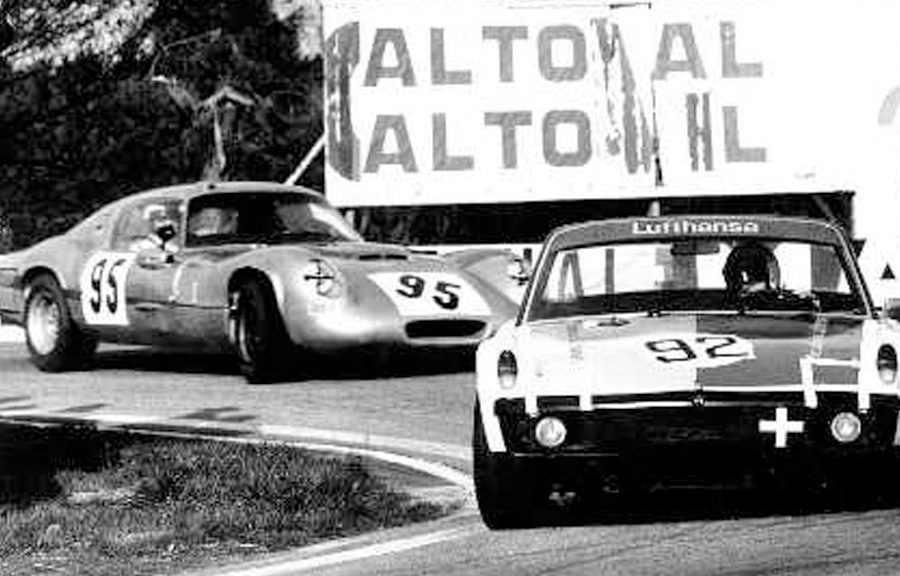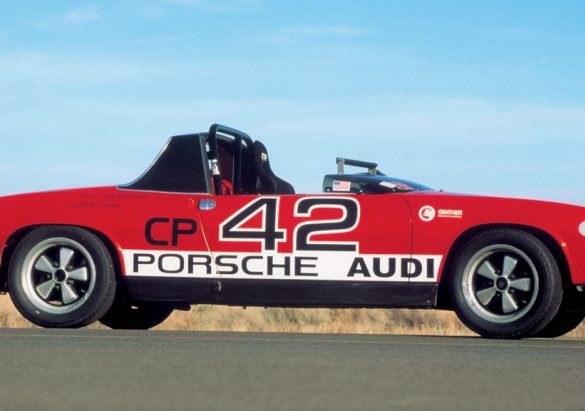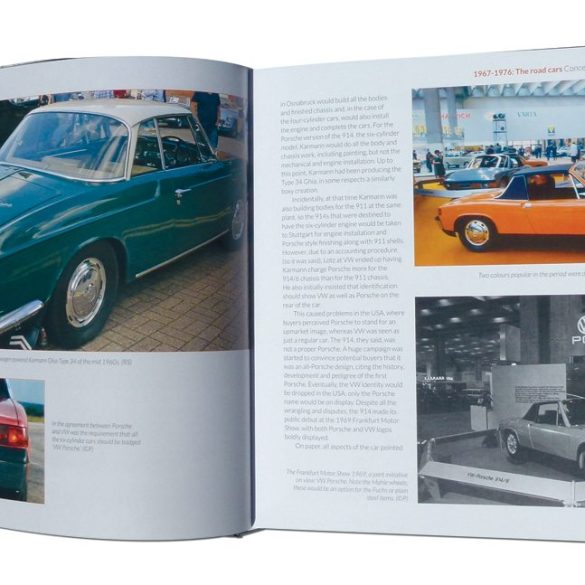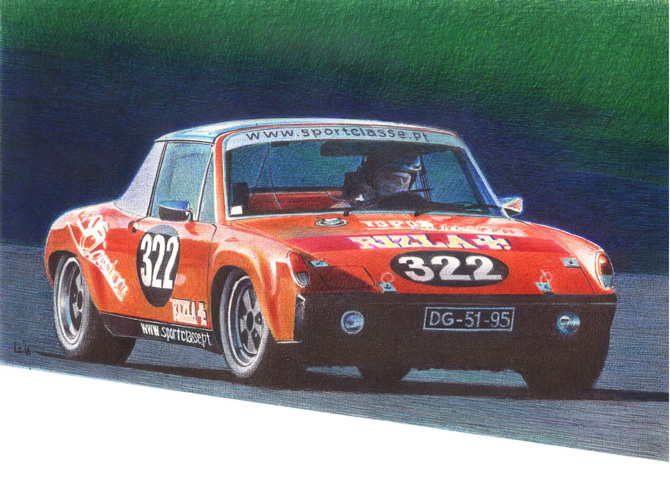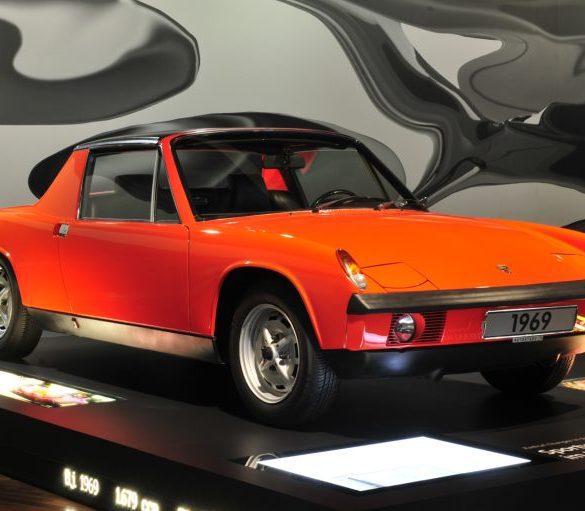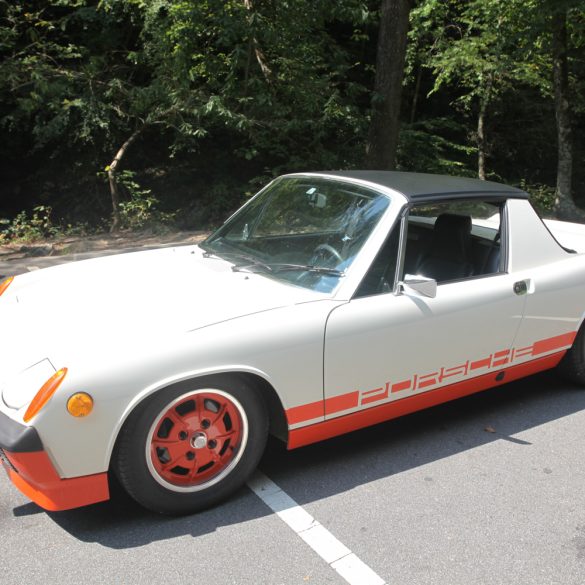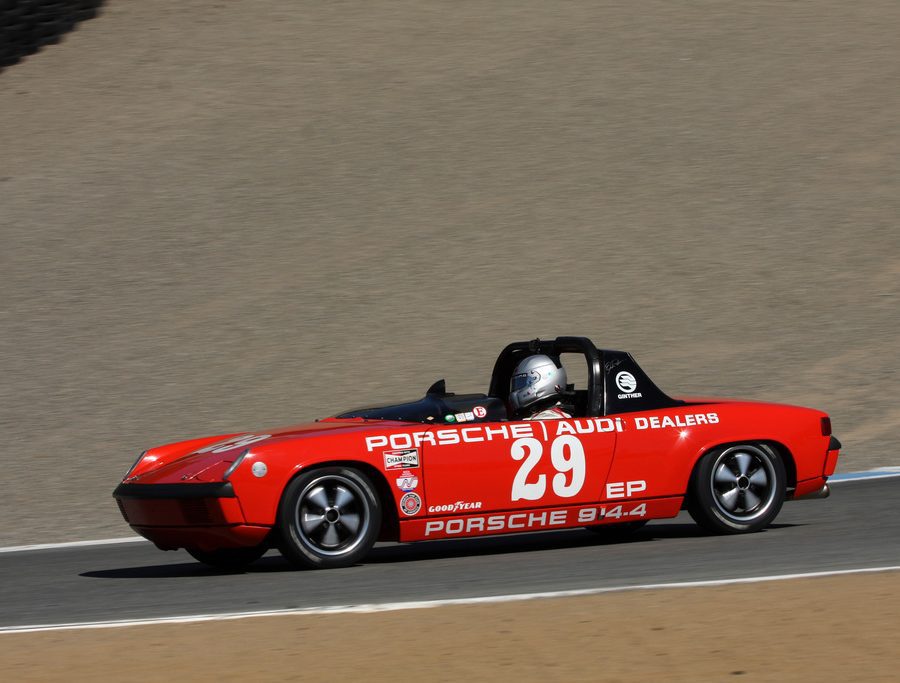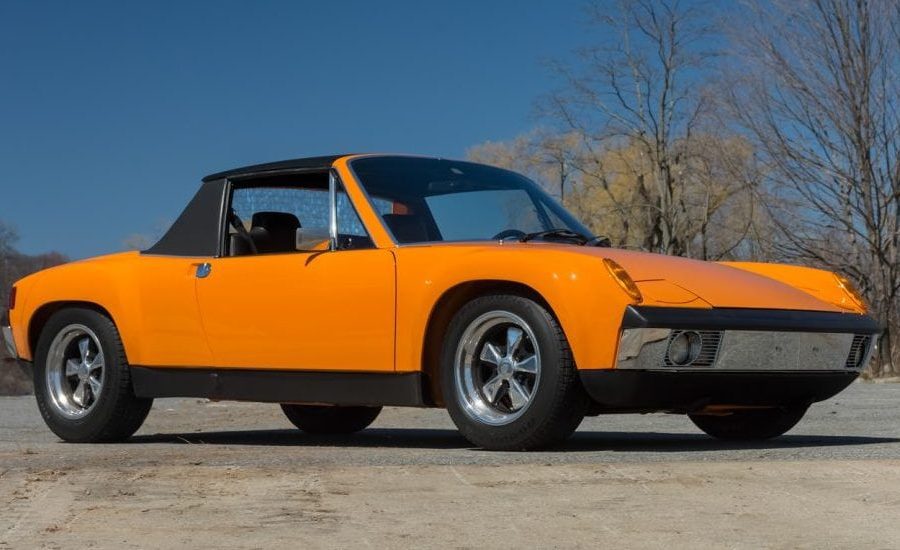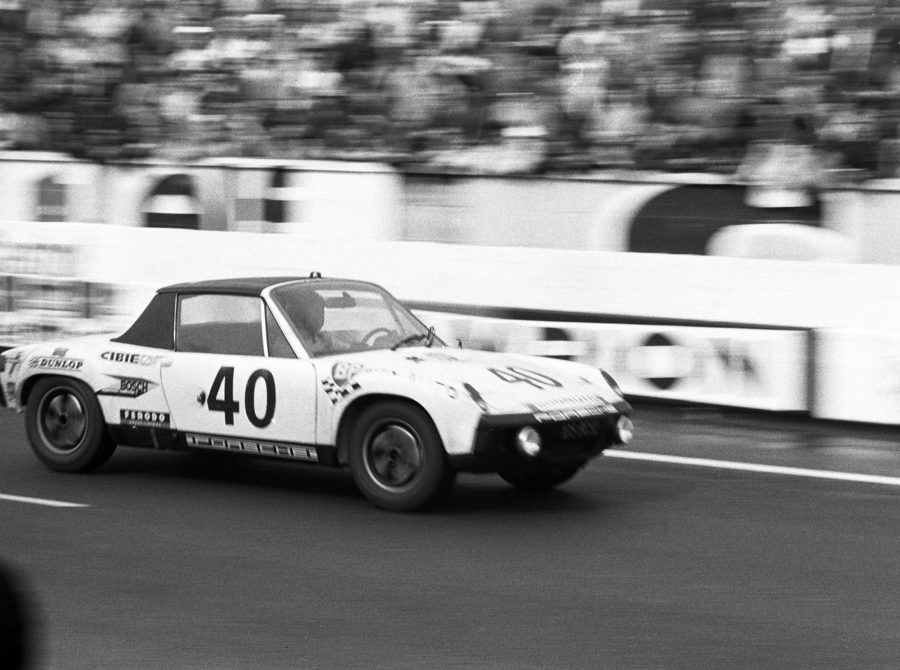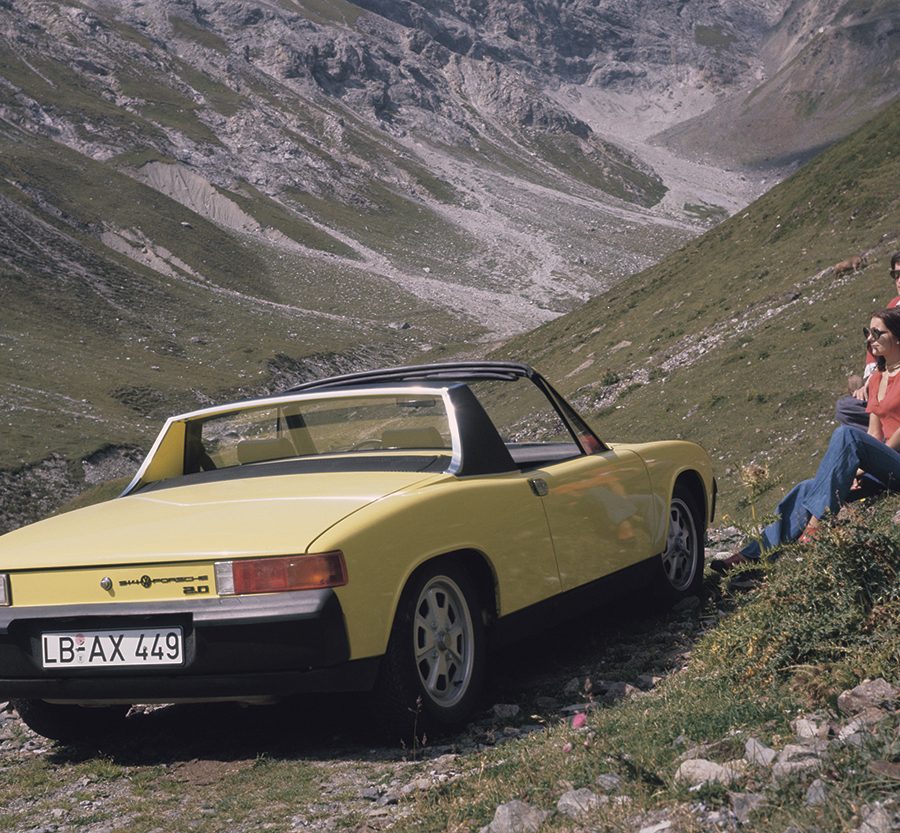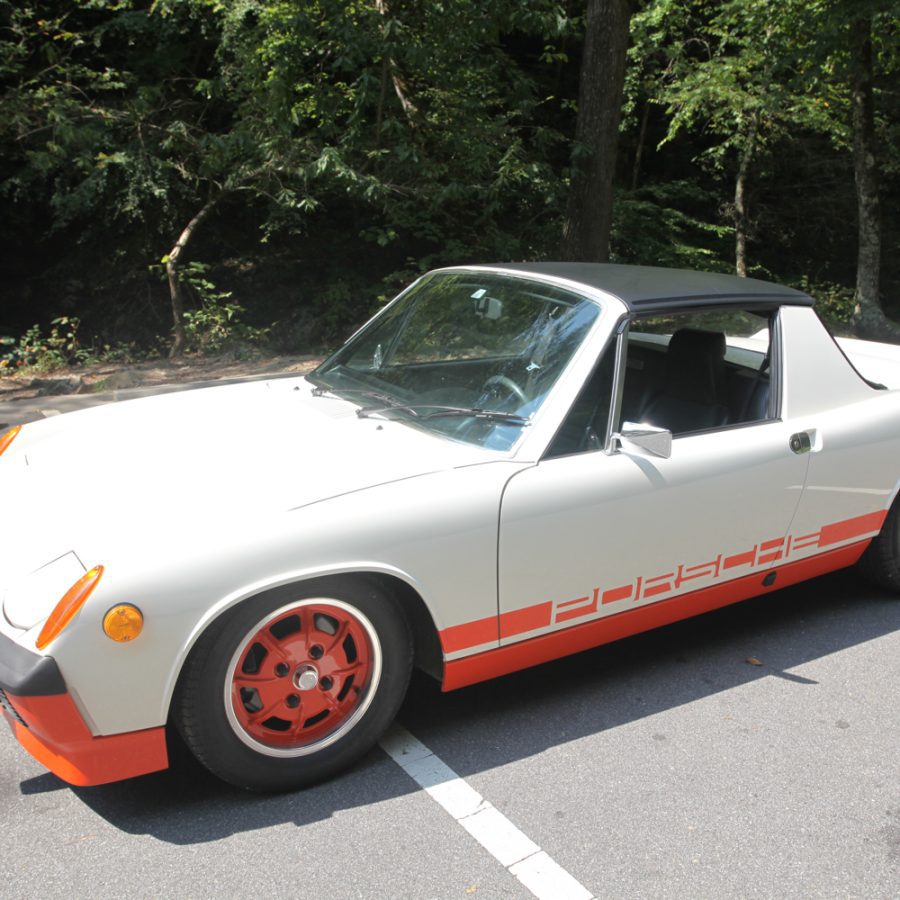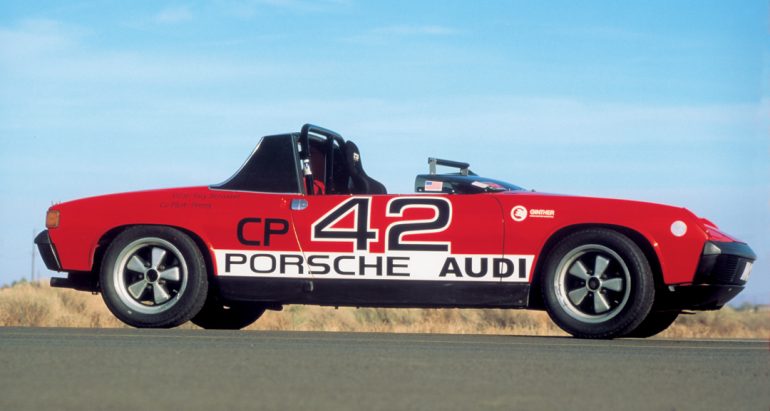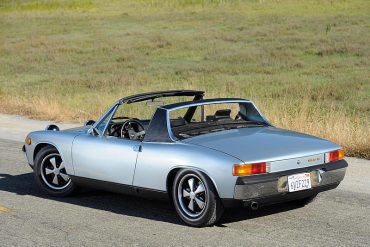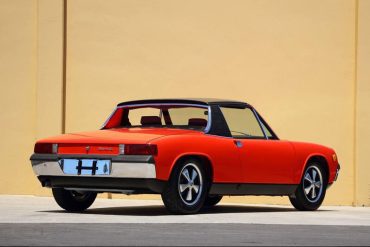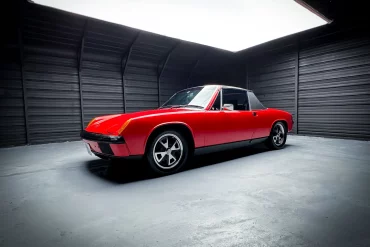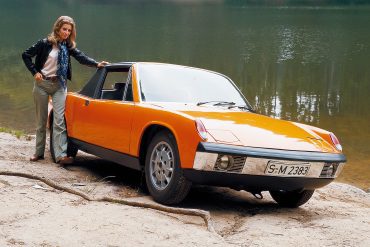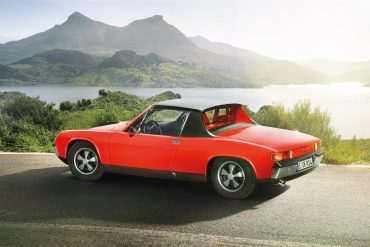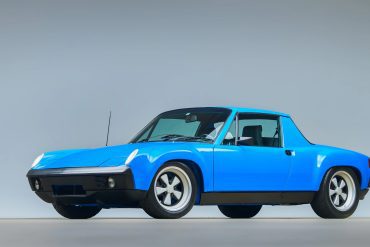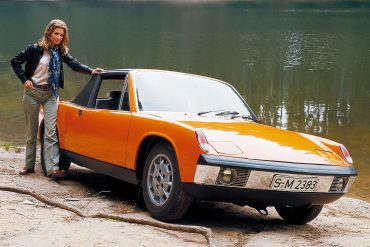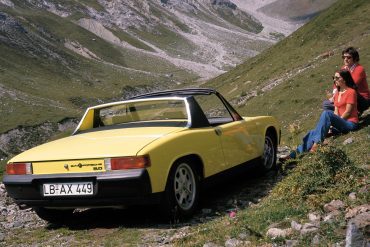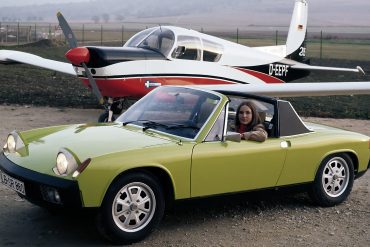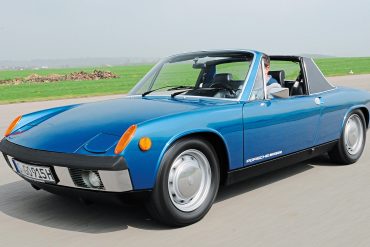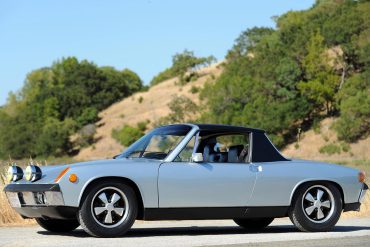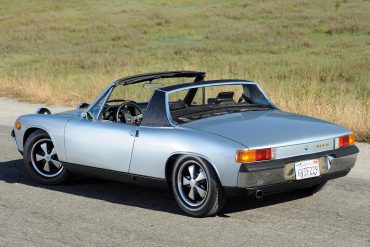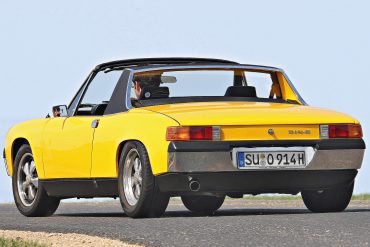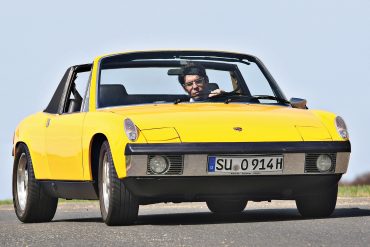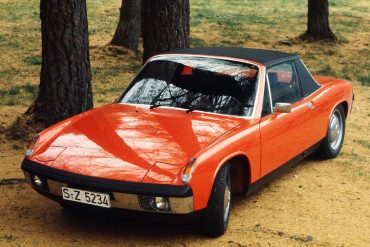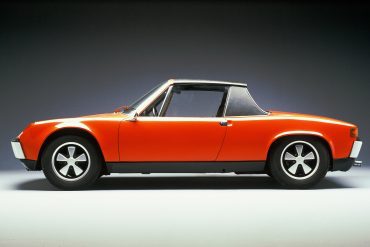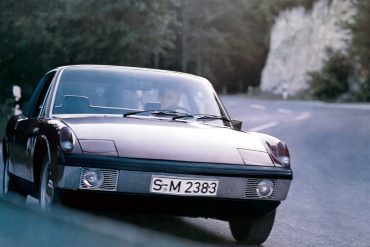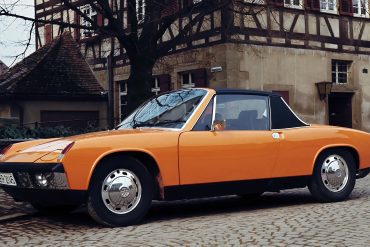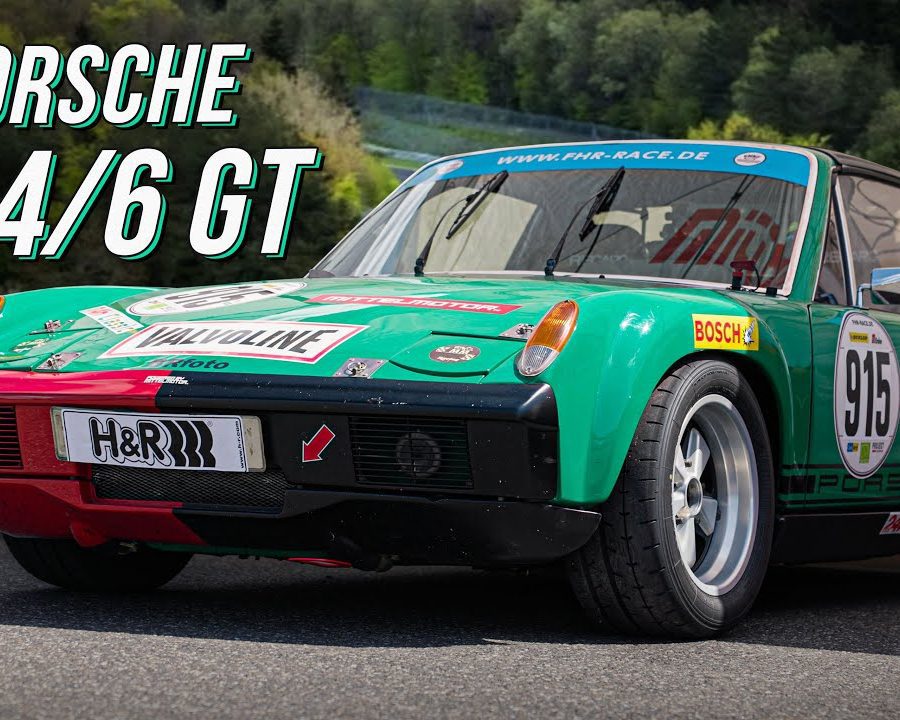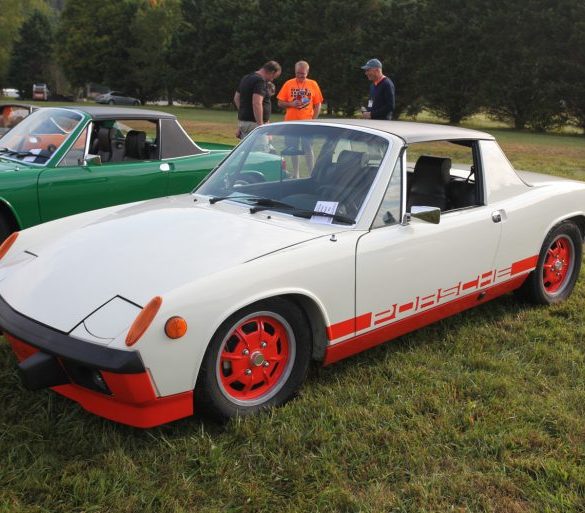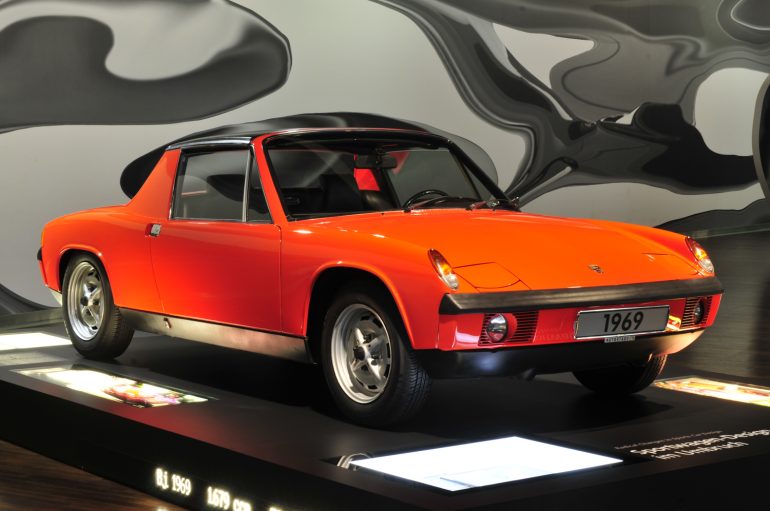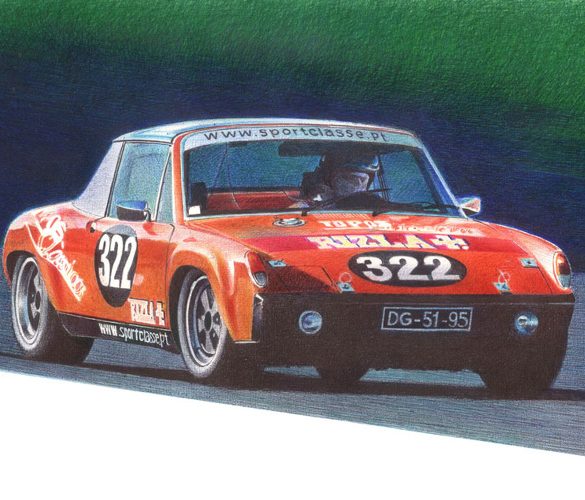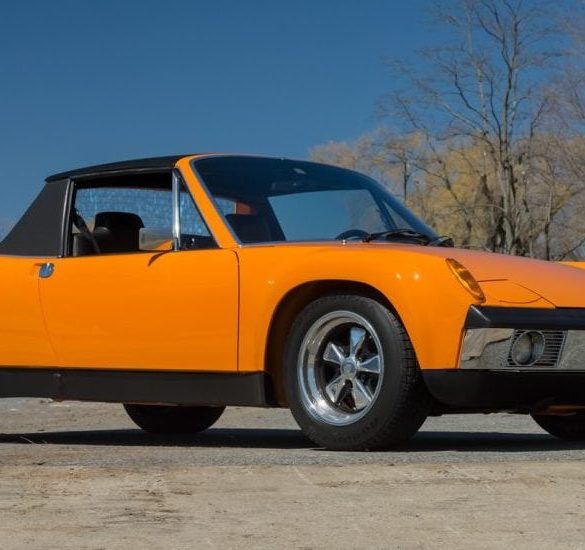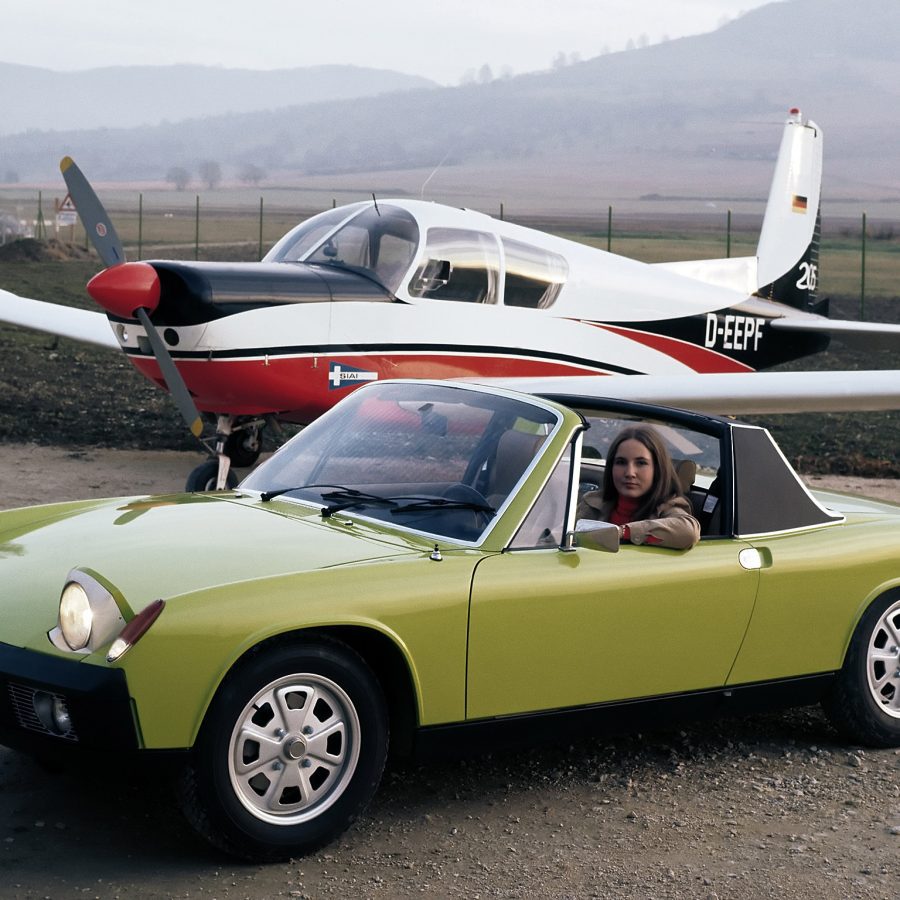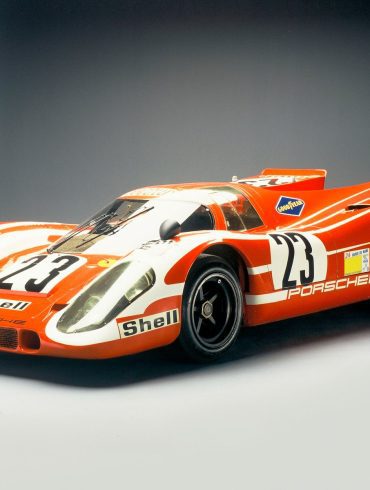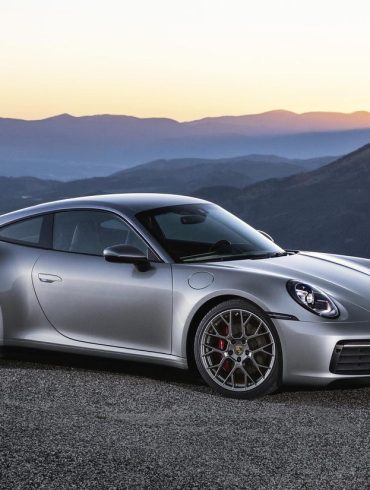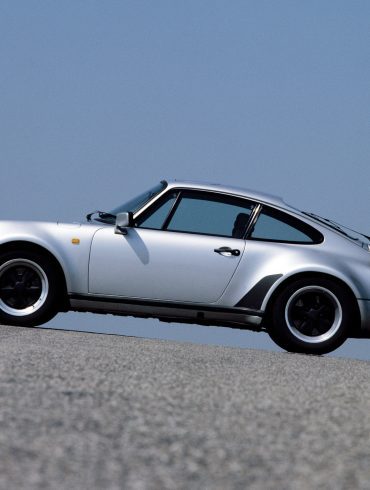Porsche 914
The Ultimate Guide
The Porsche 914 was a joint development between Porsche and Volkswagen and was the new Porsche entry-level model as of model year 1970. It was known as the "VW Porsche". Striking design features included the very long wheelbase for the vehicle length, short overhangs, the removable roof centre panel made from glass fiber-reinforced plastic as well as the wide safety bar. At launch it was available with two engines. 914: 1.7-liter flat-four engine with 80 hp from Volkswagen and the 914/6: 2.0-liter flat-six engine with 110 hp from the Porsche 911 T. These were followed by a 2.0-liter four-cylinder engine with 100 hp based on the 1.7-liter engine in model year 1973 and a 1.8-liter four-cylinder engine with 85 hp in model year 1974.
Overview / Model Guides / Featured Stories / The Market / Image Gallery
The Porsche 914: The Mid-Engine Sports Car That Broke New Ground
The Porsche 914 was a unique and innovative sports car that broke new ground for Porsche in the late 1960s and early 1970s. Introduced as a collaboration between Porsche and Volkswagen, the 914 was designed to offer an affordable, fun, and well-balanced mid-engine sports car for a new generation of enthusiasts. Despite initial skepticism and mixed reactions, the 914 has since earned a loyal following and a respected place in Porsche's history for its distinctive design, handling prowess, and accessibility.
Origins and Development
The Porsche 914 emerged from a partnership between Ferdinand Piëch (then head of development at Porsche) and Heinz Nordhoff (Volkswagen’s CEO). The collaboration aimed to create a new entry-level sports car to replace the aging Porsche 912 and Volkswagen Karmann Ghia. Porsche would handle the engineering and design, while Volkswagen would oversee production, making the 914 more cost-effective to build.
Launched in 1969, the 914 featured a distinctive targa-top design, a mid-engine layout, and a low-slung, angular body. The car was assembled by Karmann and marketed as both a Volkswagen-Porsche 914 in Europe and a Porsche 914 in the United States. The 914 was available in two primary variants:
914/4: Powered by a 1.7-liter flat-four engine sourced from Volkswagen, producing 80 horsepower.
914/6: Featuring a 2.0-liter flat-six engine derived from the Porsche 911 T, producing 110 horsepower.
The 914/6 was significantly more expensive and rare compared to the 914/4, making it a sought-after variant among collectors today.
Design and Specifications
The Porsche 914 was notable for its mid-engine layout, a rarity for affordable sports cars at the time. By placing the engine behind the driver and in front of the rear axle, the 914 offered exceptional balance, handling, and stability. This layout gave the car a 50:50 weight distribution, making it agile and responsive through corners.
Key specifications of the 914 included:
Chassis: Steel monocoque with a removable targa roof panel.
Transmission: 5-speed manual gearbox.
Suspension: Independent suspension with MacPherson struts in the front and trailing arms in the rear.
Brakes: Disc brakes on all four wheels.
Top Speed: Around 110 mph (177 km/h) for the 914/4 and 125 mph (201 km/h) for the 914/6.
The 914’s minimalist interior featured a simple, functional dashboard, bucket seats, and a centrally located gearshift. Despite its modest power output, the 914’s light weight (around 2,000 pounds or 900 kg) and excellent handling made it a joy to drive.
Racing Success
The Porsche 914 also saw success in motorsport, particularly in the hands of privateer teams and amateur racers. The 914/6 variant was notably more competitive due to its more powerful flat-six engine. In 1970, a 914/6 GT finished sixth overall and first in its class at the 24 Hours of Le Mans, driven by Claude Ballot-Léna and Guy Chasseuil.
The 914 also performed well in SCCA (Sports Car Club of America) racing and various endurance events. Its combination of light weight, nimble handling, and reliability made it a popular choice for club racers and enthusiasts who sought an affordable entry into competitive motorsport.
Legacy and Impact
The Porsche 914’s initial reception was mixed, with some enthusiasts skeptical about its Volkswagen connections and unconventional styling. However, over time, the 914 has gained appreciation for its unique character, mid-engine layout, and role in making Porsche ownership more accessible.
The 914 also laid the groundwork for future mid-engine Porsche models, including the Porsche Boxster and Cayman. It demonstrated the advantages of a mid-engine configuration for balance and handling, influencing Porsche’s design philosophy for decades to come.
The 914 has become a cult classic among enthusiasts and collectors. Its affordability, simplicity, and fun-to-drive nature make it an appealing entry into the world of classic Porsches. Well-maintained examples of the 914/6, in particular, are highly sought after, with values appreciating significantly in recent years.
Conclusion
The Porsche 914 may have started as an unconventional collaboration, but it ultimately carved out a unique place in Porsche’s history. With its innovative mid-engine design, accessible price point, and motorsport pedigree, the 914 proved that driving enjoyment isn’t solely the domain of high-powered sports cars. Today, the 914 is celebrated for its distinctive styling, handling prowess, and the important role it played in Porsche’s evolution as a sports car manufacturer. It remains a beloved classic that embodies the spirit of innovation, collaboration, and pure driving fun.
Porsche 914 Basics
Manufacturer: Porsche (Type 914/6), Karmann (Type 914/4)
Production Years: 1969 - 1976
Body Style: 2-Door Targa
Layout: Rear mid-engine, rear-wheel-drive layout
Engines: 1.7 L Volkswagen Type 4 Flat-4, 1.8 L Volkswagen Type 4 Flat-4, 2.0 L Volkswagen Type 4 Flat-4, 2.0 L Type 901/36 Flat-6 (914/6)
Transmission: 5-speed manual or 4-speed Sportomatic
Premiere: 1969 September 11, IAA Frankfurt motor show
Predecessor: Porsche 912
Successor: Porsche 924
More Info
It was a car that was ahead of its time. Its mid-engine layout and focus on fuel efficiency were innovative for the era.
Stuttcars.com
The 914 is a true driver's car. It's light, nimble, and incredibly fun to toss around corners
Stuttcars.com


